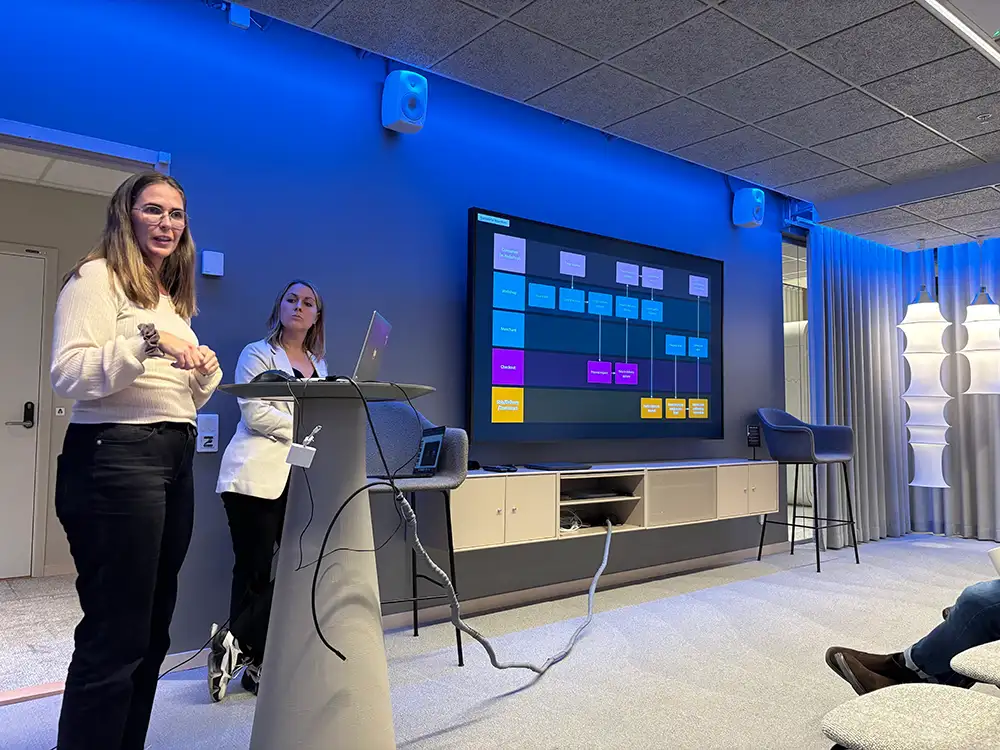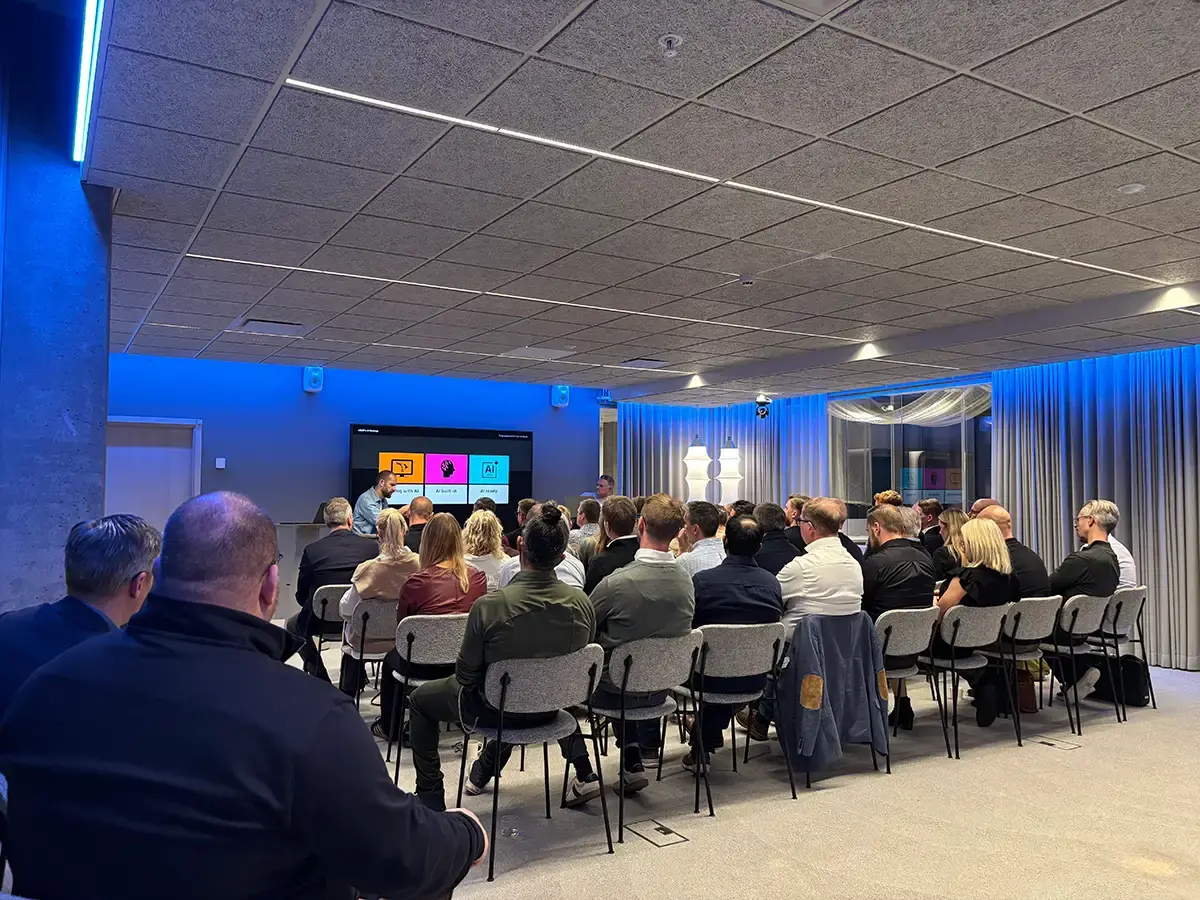
Last update: 04.07.2025
In this blog:
Today's ecommerce...- Better design = measurable impact
- Built to scale, without multiplying complexity
- Strategic checkout = strategic differentiation
- Loyalty starts at the last click
- Operational simplicity = commercial flexibility
- Why this matters now
- Further reading: Checkout FAQs
Today's ecommerce...
In e-commerce today, the margins are thin, the noise is loud, and the customer is impatient.
We’ve all faced the moment: you’re ready to buy, you hit the checkout… and suddenly, it feels like walking into a postal sorting room.
Too many delivery options. Too little clarity. You hesitate. You doubt. You abandon.
This is not a technical issue. This is psychological.
We’ve reached a point where the final 15 seconds of a purchase, the checkout, matter more than the previous 15 minutes. Because that’s where emotion decides. It’s no longer just about getting delivery right. It’s about making it feel right.
That’s why nShift — the backbone behind millions of deliveries across Europe — has introduced an updated Checkout experience. Not to replace what came before, but to reflect what we've learned through years of collaboration with retailers, logistics professionals, and e-commerce leaders like you.
This is not a feature drop. It’s a strategic shift. One designed to help your business scale, convert, and build trust at the moment it matters most.
This is no longer a delivery menu. This is a decision engine.
1. Better design = measurable impact
When we talk about “design,” we’re not talking about cosmetics. We’re talking about psychological friction.
A slightly cluttered interface might seem harmless. But in the heat of a buying decision, it can trigger hesitation, and hesitation kills momentum.
The updated Checkout experience is built on proven behavioral science, which shows that too many poorly presented choices reduce confidence, delay decisions, and increase drop-offs.
“Reducing friction at the decision point can increase checkout completion by up to 35%.” (Sweller, 1988; Hick & Hyman, 1952)
That’s why:
- Delivery options are framed, not dumped.
- Complexity is tamed, not exposed.
- Choices feel obvious, not overwhelming.
This isn’t UX for its own sake. It’s psychology for performance.

2. Built to scale, without multiplying complexity
Most systems either simplify or scale. Rarely both.
The updated Checkout strives for both, because it's built on a principle that progress happens not through logic, but through lateral thinking and testing.
Rather than rebuilding, you refine what already works—unlocking smarter, faster conversion gains.
- Add markets, languages, and currencies — without code.
- Run experiments and A/B tests on delivery logic to find what actually converts.
- Apply hyper-targeted rules by product, region, or brand.
And all of this runs on the platform already trusted by thousands of retailers — from fast-scaling DTC brands to European powerhouses.
You don’t need to rip and replace. You evolve on your terms, and Checkout grows with you.
3. Strategic checkout = strategic differentiation
Think of Checkout not as the end of the customer journey, but as the conversion bottleneck with the most leverage.
With the new interface, you can:
- Guide faster decisions → higher conversion
- Encourage upsell to express or green delivery → more margin
- Localize options per country or persona → fewer abandoned carts
This is Nudge Theory at work — smart defaults, subtle framing, and a UI that nudges customers toward better (and more profitable) choices.
“Small changes in delivery framing can improve selection of premium options by 20–30%.” (Thaler & Sunstein, 2008)
It’s not just a better experience. It’s a quiet profit center because the customer is receiving value.
4. Loyalty starts at the last click
It’s easy to think loyalty is earned through brand storytelling or first impressions. But as Nobel Laureate Daniel Kahneman showed with the Peak-End Rule, what we remember most is how the journey ends.
That makes your checkout the last impression, and possibly the most important one.
The updated Checkout experience is guided by three design truths:
- Visually clean
- Behaviorally intuitive
- Operationally reliable
“Customers don’t remember average effort. They remember the final click.” (Kahneman, 1993)
A good checkout makes a sale. A great one creates a memory.
5. Operational simplicity = commercial flexibility
For your team, this isn’t just about UX. It’s about control.
The updated Checkout gives your ops and digital teams:
- A unified interface for managing all rules, carriers, and branding.
- The ability to launch or adjust configurations instantly.
- No developer dependency — just decision-making power.
Want to emphasize eco delivery during Earth Week? Promote click & collect in December? Hide underperforming carriers after bad reviews?
Do it in minutes, not weeks.
This is where logistics becomes marketing.
Why this matters now
In a world of parity, where competitors can match your price, product, and ads, experience becomes the last competitive edge.
That's why the updated Checkout delivers:
- A smarter conversion engine
- A more scalable architecture
- A stronger emotional close to the customer journey
- And a team-friendly backend that makes all of it usable, fast
“This isn’t an upgrade because something was broken. It’s an evolution because customer expectations and business ambitions have moved forward. And so has nShift.”
Johan Hellman,
VP Product Management nShift
Turn delivery choice into a conversion driver
The new nShift Checkout integrates flexible delivery into your ecommerce experience to lift conversion, reduce friction, and streamline fulfillment.
Learn more
Further reading: Checkout FAQs
What is checkout software?
Checkout software is a tool that manages the final steps of an online purchase, ensuring a seamless payment and order confirmation process. It integrates with delivery management systems to provide options like shipping methods and estimated delivery times at checkout. By streamlining order completion and offering tailored delivery options, it enhances the customer experience and reduces cart abandonment. It also supports real-time updates for an efficient and reliable transaction process.
How to A/B test checkout?
A/B testing your checkout involves creating two versions of the process to see which performs better in terms of conversion rates. Test key elements like delivery options, user prompts, or the placement of shipping information fields. Evaluate the impact of offering different delivery speeds or showing total shipping costs earlier in the process. Use data from these tests to refine the checkout flow, ensuring a balance of simplicity and functionality that aligns with customer preferences.
How to increase checkout conversion rates?
To boost conversion rates, provide clear and flexible delivery options upfront, empowering customers to choose what works best for them. Offer estimated delivery dates or faster shipping options to meet varied needs. Simplify the payment and shipping details process while ensuring transparency about delivery times. Tailoring the experience to address customer concerns can significantly reduce friction and encourage successful checkouts.
What is a good checkout conversion rate?
A good checkout conversion rate varies based on factors like the type of products or services offered and delivery complexity, but typically falls between 20-40%. Higher rates are achievable when checkout integrates real-time delivery information and operational transparency. Focusing on clear communication of delivery timelines and pricing can also enhance trust, moving more customers to complete their orders. Continuously optimizing delivery and checkout features ensures alignment with customer expectations and industry standards.
Let's talk
Whether you’re scaling across Europe, optimizing for peak season, or simply tired of checkout being a bottleneck, the updated nShift Checkout is your next strategic move.
Let’s build a delivery experience that feels as good as your brand deserves.
Sources & references
- Sweller, J. (1988). Cognitive Load During Problem Solving: Effects on Learning. Cognitive Science, 12(2), 257–285.
- Hick, W. E. (1952). On the Rate of Gain of Information. Quarterly Journal of Experimental Psychology, 4(1), 11–26.
- Thaler, R. H., & Sunstein, C. R. (2008). Nudge: Improving Decisions About Health, Wealth, and Happiness. Yale University Press.
- Kahneman, D., & Redelmeier, D. A. (1996). Patients' memories of painful medical treatments. Pain, 66(1), 3–8.
- Zajonc, R. B. (1968). Attitudinal Effects of Mere Exposure. Journal of Personality and Social Psychology, 9(2, Pt.2), 1–27.
- Lindgaard, G., Fernandes, G., Dudek, C., & Brown, J. (2006). Attention web designers: You have 50 milliseconds to make a good first impression! Behaviour & Information Technology, 25(2), 115–126.
- Forrester Research (Various Reports). The Business Impact of Customer Experience, and Total Economic Impact (TEI) studies.
- Nielsen Norman Group (nngroup.com). Research on UX, choice overload, first impressions, and behavior-driven design.

Author
Thomas Bailey
Product Innovation Lead, nShift

About the author
Thomas Bailey
Thomas plays a key role in shaping how new features and platform improvements deliver real value to customers. With a background spanning product, tech, and go-to-market strategy, he brings a pragmatic view of what innovation looks like in practice and how to make delivery experiences work harder for your business.





